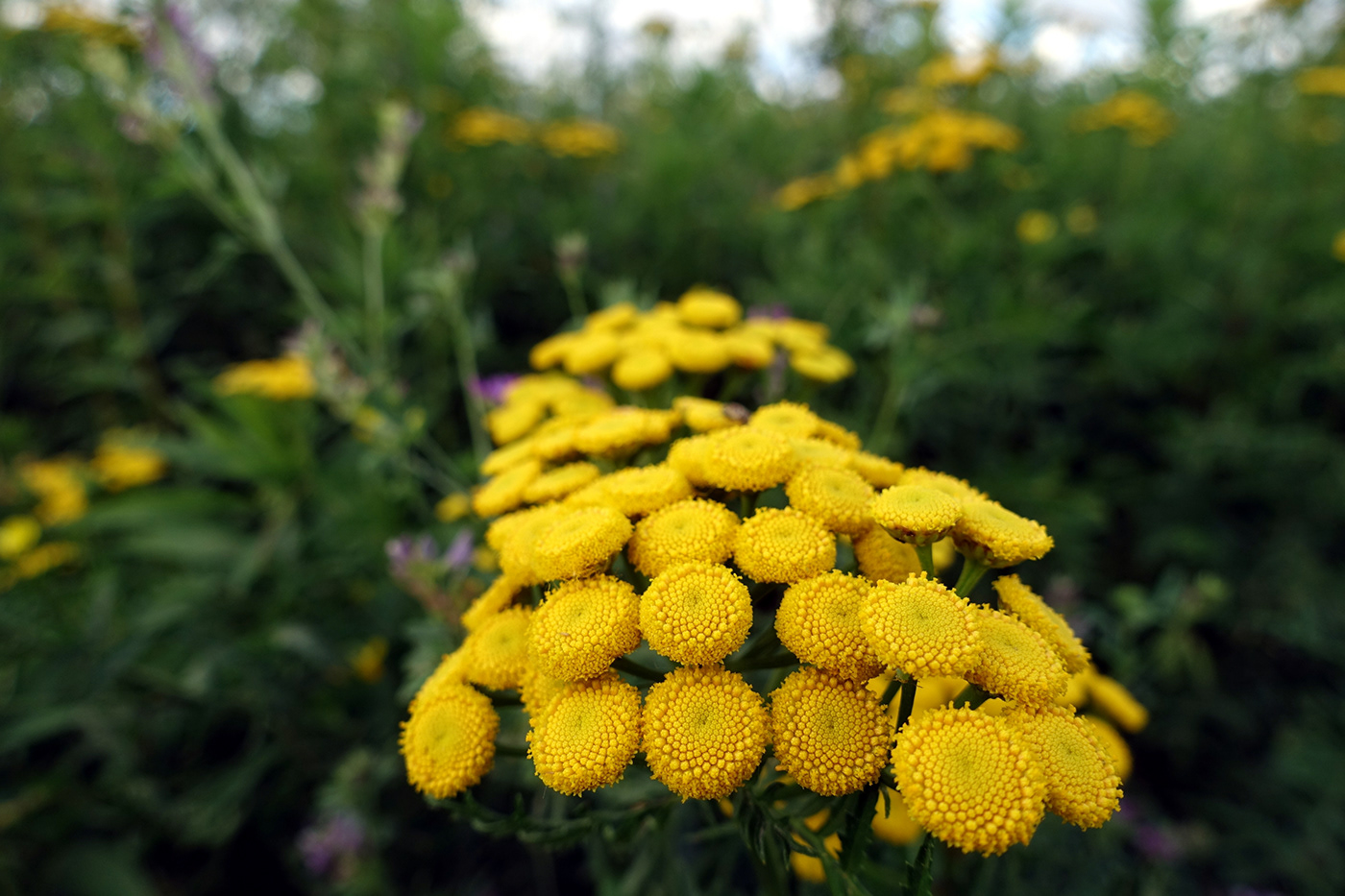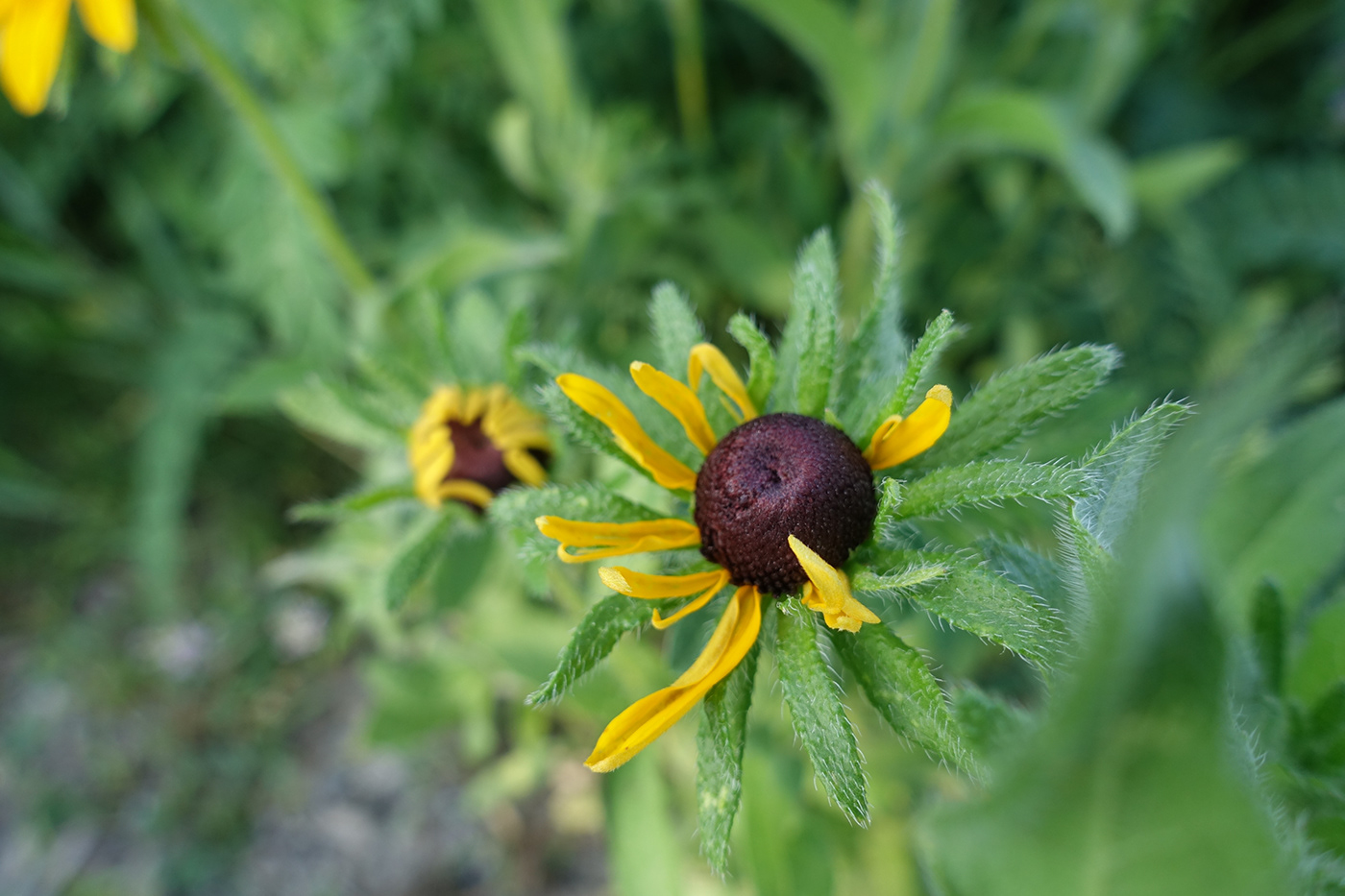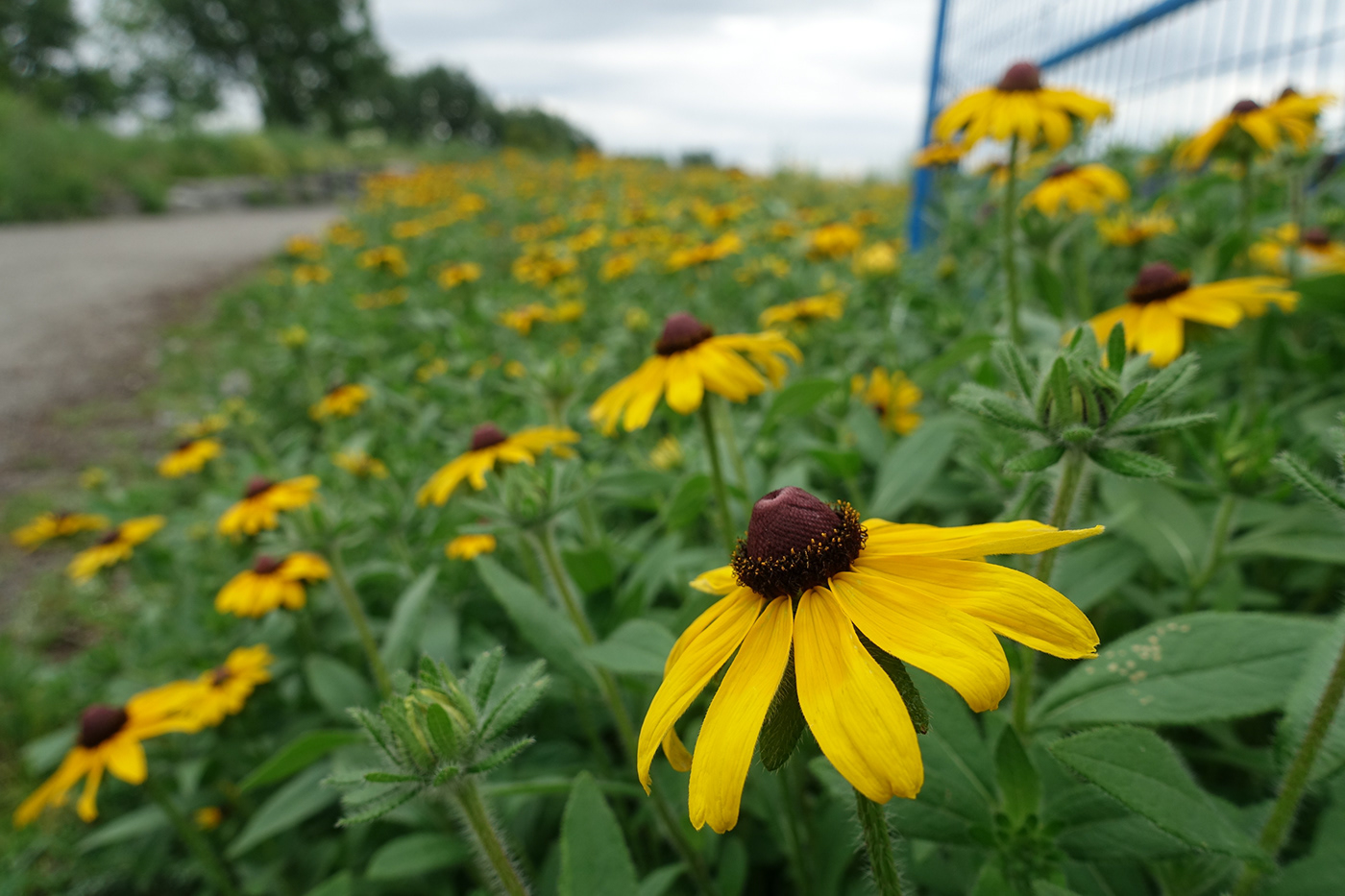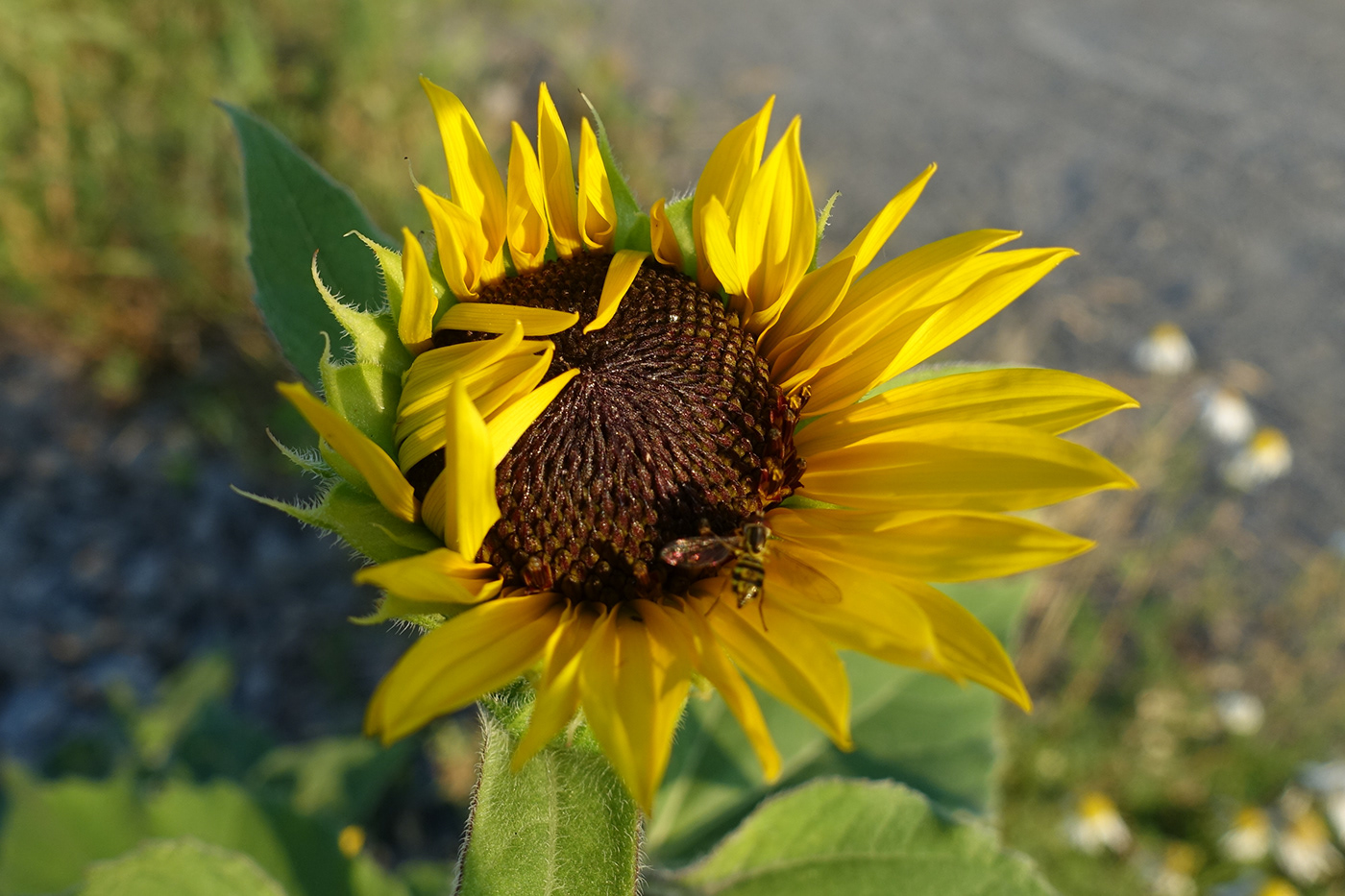🌻🌻🌻 Wonderful Yell🌞w Fl🌞wers! 🌻🌻🌻
This summer, I went more than 30 times to Frederic-Back Park and took a record number of pictures. Yellow, pink, blue, white flowers... of all shapes and colors.
I present you in this project my most beautiful photos of flowers.
Almost always early in the morning, because there are less people, but mostly because the colors are wonderful with the first light of the day.
It was a great pleasure for me to photograph. Nature is so beautiful!
For more information about the varieties of flowers, click on the links in blue.
Good Viewing!
"Tansy"

Native to Eurasia, of the aster family, Tansy is a herbaceous flowering plant with finely divided compound leaves and yellow button-like flowers. Its stem is 50 to 150 cm high and branches near the top. The round, flat-topped, button-shaped flower heads are produced in terminal clusters from mid to late summer. The odor is similar to camphor with notes of rosemary.
This plant is toxic. It is thought to repel ants, cucumber beetles, Japanese beetles, squash bugs and some types of flying insects, among others.
- - - - - - -
"Coreopsis Grandiflora"



Coreopsis grandiflora is a North American species of perennial plant in the family Asteraceae. The common name is large-flowered tickseed. It is found in eastern Canada (Quebec, Ontario, New Brunswick) and much of the United States, especially the south-central part of the country (Oklahoma, Arkansas, etc.). The species is widely cultivated in China and naturalized there.
Coreopsis grandiflora is a perennial herb sometimes greater than 60 cm (2 feet) tall. It produces yellow ray and disc flowers. Its native habitats include prairies, glades, open woods, thickets, roadsides and open ground. The Latin specific epithet grandiflora means large-flowered. The plant attracts bees and butterflies.
In the UK the cultivar 'Early Sunrise' has received the Royal Horticultural Society's Award of Garden Merit.
- - - - - - -
"Gaillardia Yellow Queen"

Gaillardia, Blanket Flower, Indian Blanket 'Yellow Queen' Asteraceae family, genus Gaillardia, Species x grandiflora, Cultivar Yellow Queen. The height of the plant is 18-24 in (45-60 cm).
The Gaillardia Yellow Queen is attractive to bees, butterflies and/or birds.
- - - - - - -
"Lotus corniculatus"

Lotus corniculatus is of the pea family Fabaceae, native to Eurasia and North Africa.
The name 'bird's foot' refers to the appearance of the seed pods on their stalk. The height of the plant is variable, from 5 to 20 centimetres (2 to 8 inches), occasionally more where supported by other plants; the stems can reach up to 50 cm (20 in) long. It flowers from June to September. The flowers develop into small pea-like pods or legumes.
The plant is an important nectar source for many insects and is also used as a larval food plant by many species of Lepidoptera.
- - - - - - -
"Asclepias"


Asclepias is a genus of herbaceous, perennial, flowering plants known as milkweeds. The genus contains more than 200 species widely distributed in Africa, North and South America.
The leaves of Asclepias species are a food source for monarch butterfly larvae and some other milkweed butterflies.
Some milkweed species are not suitable for butterfly gardens and monarch waystations. For example, A. curassavica, or tropical milkweed. Year-round plantings of this species in the United States are controversial and criticised, as they may lead to new overwintering sites along the U.S. Gulf Coast and the consequent year-round breeding of monarchs. This is thought to adversely affect migration patterns, and to cause a dramatic build-up of the dangerous parasite, Ophryocystis elektroscirrha.
Because of this, it is most often suggested to grow milkweeds that are native to the geographical to prevent negative impacts on monarch butterflies.
- - - - - - -
"Heliopsis helianthoides"

A beautiful monarch butterfly at work. This is also the only monarch butterfly I had a chance to photograph this summer 🙂.






Heliopsis helianthoides (False Sunflower) is a species of flowering plant in the family Asteraceae, known by the common names rough oxeye, smooth oxeye and false sunflower. It is native to eastern and central North America from Saskatchewan east to Newfoundland (in Canada) and south as far as Texas, New Mexico, and Georgia.
This plant growing 40–150 cm (16–59 in) tall. The flowers are produced from midsummer to early autumn (fall).
- - - - - - -

"Rudbeckia Hirta"

Rudbeckia hirta, commonly called Black-eyed Susan and Gloriosa Daisy, is a North American flowering plant in the family Asteraceae, native to Eastern and Central North America and naturalized in the Western part of the continent as well as in China. It has now been found in all 10 Canadian Provinces and all 48 of the states in the contiguous United States
Rudbeckia hirta is an upright annual (sometimes biennial or perennial) growing 30–100 cm (12–39 in) tall by 30–45 cm (12–18 in) wide.
In the species, the flowers are up to 10 cm (4 in) in diameter, with yellow ray florets circling conspicuous brown or black, dome-shaped cone of many small disc florets.
In the species, the flowers are up to 10 cm (4 in) in diameter, with yellow ray florets circling conspicuous brown or black, dome-shaped cone of many small disc florets.
Butterfly attractant for enhancing gardens.
Butterflies are attracted to Rudbeckia hirta. It is a larval host to the bordered patch, gorgone checkerspot, and silvery checkerspot species.
- - - - - - -




























"Common Sunflower"

The Common sunflower (Helianthus annuus) is a large annual herbaceous plant
cultivated for its oil and edible seeds. This species of sunflower is also used as wild bird food, livestock fodder (as meal or silage), in some industrial applications, and as an ornamental plant in home gardens.
cultivated for its oil and edible seeds. This species of sunflower is also used as wild bird food, livestock fodder (as meal or silage), in some industrial applications, and as an ornamental plant in home gardens.
Common sunflower was one of many plants cultivated by Native Americans in prehistoric times in North America.
Domesticated in what is now the southeastern United States about 5,000 years ago, there is evidence that it was first domesticated in Mexico around 2600 BCE.
- - - - - - -





















Look closely at the photo on the left, I think a tiny drone took pictures of me. I cropped the photo to show you. I had time to take two shots before this "bug" disappeared.



